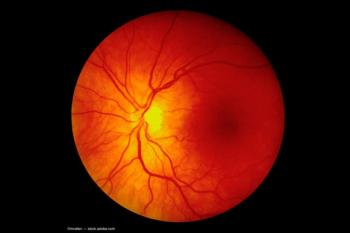
Adjunct therapies explored for prostaglandin analogs
Despite the efficacy of the prostaglandins as first-line agents for reducing IOP, many patients require one or more additional agents to reach treatment goals. A recent clinical trial compared two agents, brinzolamide (Azopt, Alcon Laboratories) and brimonidine (Alphagan P, Allergan), as adjunctive therapy and offers perspectives on the best choice for addition to a prostaglandin.
Key Points
What is the best choice of adjunct agents? The alpha-agonists have a good peak effect but a poor trough effect and, therefore, suboptimal diurnal efficacy. The beta-blockers also have suboptimal nocturnal efficacy. The often-overlooked carbonic anhydrase inhibitors (CAIs) show promise as the adjunctive therapy of choice based on greater 24-hour efficacy.
This article will review various options for adjunctive therapy, examine a recent study our group conducted that compared a CAI with an alpha-agonist as an adjunct to a PGA, and, finally, offer treatment recommendations for adjunctive therapy.
The PGAs are first-line therapy for the treatment of glaucoma because of their documented history of safety and efficacy. Despite their efficacy, nearly half of all patients require adjunctive therapy to meet established treatment goals. IOP reduction goals have become increasingly more aggressive due to a better understanding of the risks of elevated IOP and the development of more and better treatment modalities.
For most patients with glaucoma, the treatment goal is a 30% reduction in IOP, a level that demonstrates slowing of visual field loss.1,2 The PGAs, on average, provide approximately a 30% reduction in IOP.3
In reality, this means that although about half of patients achieve this goal, about half of patients do not. This result is suggested by the results of the Ocular Hypertension Treatment Study (OHTS), in which 39.7% of patients required adjunctive therapy to achieve a target IOP reduction of only 20%.4 Therefore, it is expected that when setting the treatment goal at 30% IOP reduction, the number of patients who need adjunctive therapy will be even greater.
Knowing that nearly half of patients will require more than one therapy, it is prudent to review the criteria for selecting the best adjunctive agent. First and foremost, efficacy is essential. The adjunct must provide effective IOP lowering via a complementary mechanism when used in addition to a PGA. Elevated IOP is a strong risk factor for glaucoma progression.5
The optimal agent provides both 24-hour efficacy and maintenance of the IOP-lowering effect over time. Fluctuation in IOP also may be linked to glaucoma progression,6-9 although results are conflicting5 and further research is needed to confirm this relationship. Nonetheless, reducing the peak IOP that occurs over 24 hours potentially can reduce insults and damage to the optic nerve head.
Newsletter
Don’t miss out—get Ophthalmology Times updates on the latest clinical advancements and expert interviews, straight to your inbox.













































